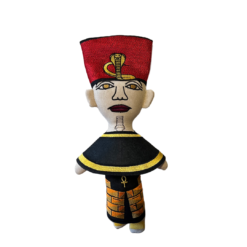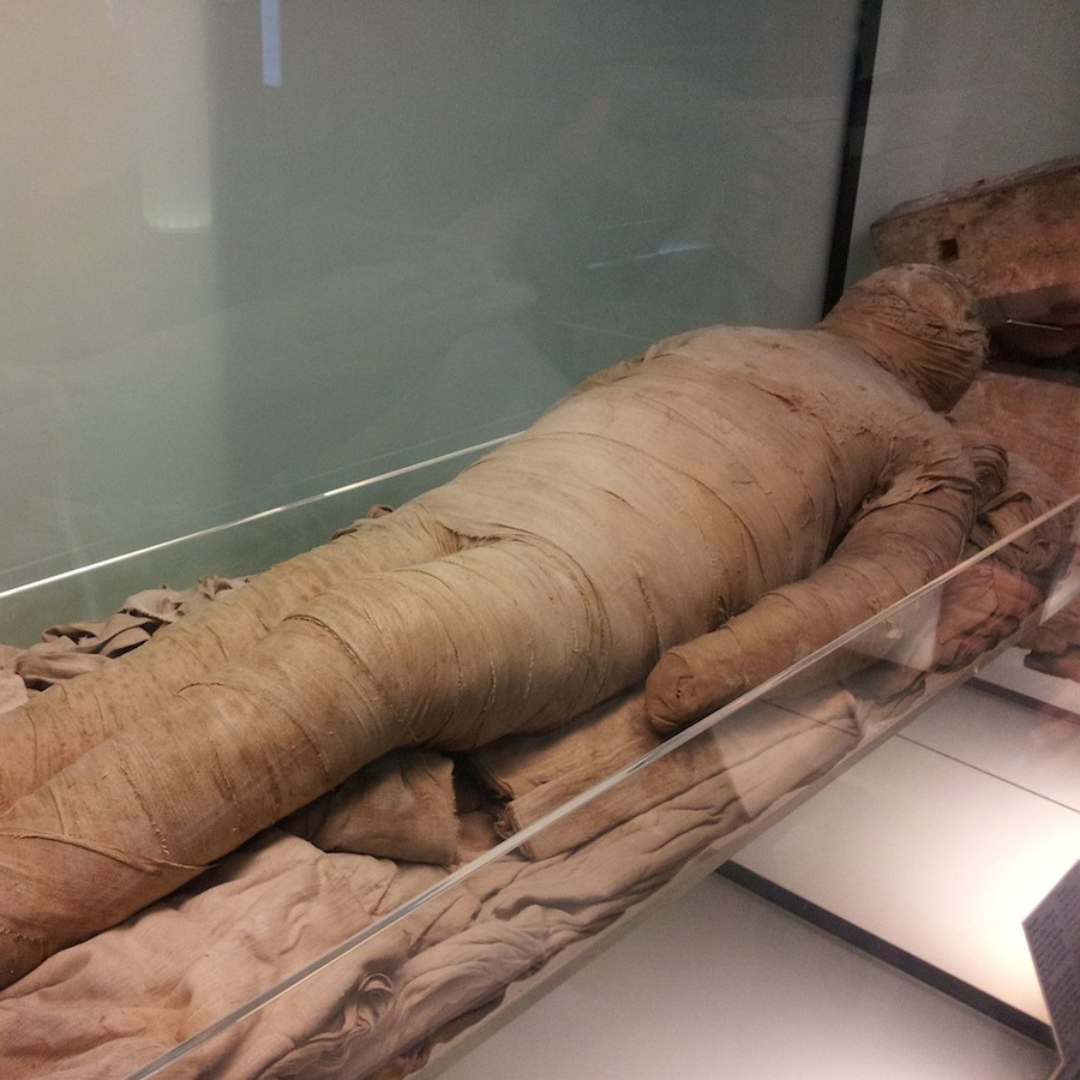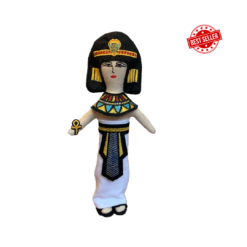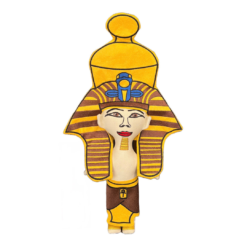Queen Hatshepsut Plush
An eco-friendly soft doll, manufactured all from fabrics,45 cm H.
Hatshipsute, the bearded queen, ruled Egypt for almost 22 years (1473-58 BC). She was the daughter of King Thutmose I, and married to her half brother Thutmose II.
Thutmose II inherited his father’s throne about 1492 BCE, with Hatshepsut as his consort. Hatshepsut bore one daughter, Neferure, but no son. When her husband died about 1479 BCE, the throne passed to his son Thutmose III, who was born to Isis. As Thutmose III was an infant, Hatshepsut acted as regent for the young king, and was named the female king of Egypt. For several years, she ruled the country on behalf of her stepson.
The “foremost of noble ladies,” Hatshepsut’s achievements as a powerful queen and then a ruling pharaoh have made her one of the most famous figures in the history of ancient Egypt. In ancient Egypt, a woman could not become pharaoh, Hatshepsut however, as the daughter of one pharaoh. In order to establish herself in the Egyptian patriarchy, she took on traditionally male roles and was depicted as a male pharaoh, with physically masculine traits and traditionally male garb. Hatshepsut’s reign was a period of great prosperity and general peace. One of the most prolific builders in Ancient Egypt, she oversaw large-scale construction projects such as the Karnak Temple Complex, the Red Chapel, the Speos Artemidos and most famously, the Mortuary Temple of Hatshepsut at Deir el Bahairi.
She also re-established trade networks and sponsored an expedition to the land of Punt, gathering ivory, resins, ebony, spices and other valuable goods.Hatshepsut commissioned hundreds of construction projects throughout both Upper and Lower Egypt. The need to legitimise herself as a pharaoh saw her constructing structures that were far grander than the ones constructed by her predecessors. Her reign was essentially a peaceful one, and her foreign policy was based on trade rather than war.
Her mummy was discovered in 1903 in tomb number KV 60 at the Valley of the Kings.
EGP1,300.00









